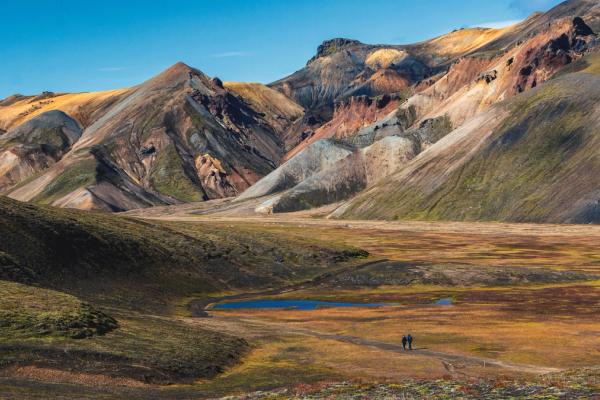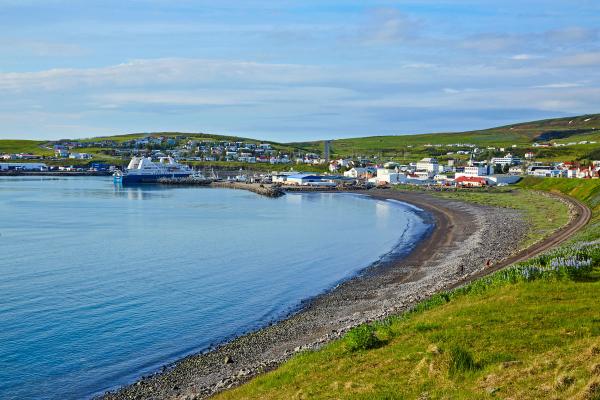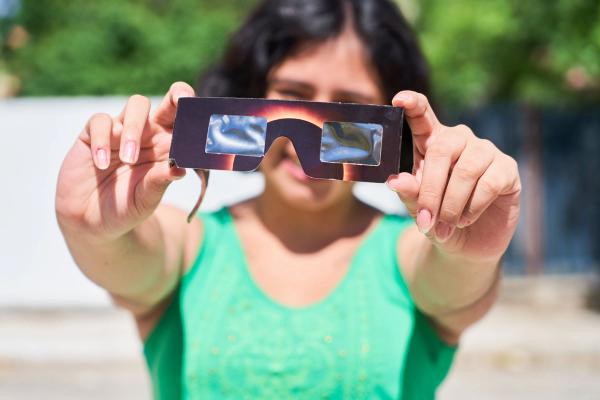
All You Need to Know About the 2026 Eclipse in Iceland
A solar eclipse happens when the moon moves between the Earth and the sun, blocking the sunlight and creating an awe-inspiring sight. On August 12, 2026, you’ll get to experience a total solar eclipse in Iceland, where the moon will completely cover the sun for a short time. This is a rare event, and seeing it in Iceland, with its incredible landscapes, makes it even more special.
Key Takeaways
- The 2026 solar eclipse will take place on August 12th.
- The eclipse will be seen all around Iceland, making it the perfect country to witness this special event.
- The northern you are, the longer the eclipse will last. That makes Akureyri a prime spot.
- The eclipse will be visible from all the incredible natural wonders Iceland has to offer. Take advantage of that.
- It's important to prepare your trip to Iceland beyond the eclipse
Why Iceland is the Best Place to Watch the 2026 Eclipse?
Iceland is one of the top places to watch the 2026 solar eclipse because the entire country is in the path of totality, meaning you’ll see the full eclipse wherever you are. Iceland’s high latitude means the sun will be lower in the sky during the eclipse, giving you a fantastic view. Plus, Iceland’s mix of clear skies, dramatic landscapes, and mild August weather makes it a prime spot for this event. While Iceland’s weather can be unpredictable, August generally offers good chances for clear skies so you can enjoy the eclipse without too much worry.
Key Facts About the 2026 Solar Eclipse in Iceland
The upcoming total solar eclipse on August 12, 2026, is a once-in-a-lifetime event for Iceland. The last time Iceland experienced a total eclipse was on June 30, 1954, and Reykjavík hasn’t seen one since June 17, 1433. After 2026, the next total eclipse over Iceland won’t happen until June 26, 2196, with Reykjavík waiting even longer—until May 26, 2245.
For the 2026 eclipse, the path of totality begins in Iceland at Straumnes Lighthouse in Hornstrandir, Westfjords, at 17:43:28 UT, with totality lasting 1 minute and 26 seconds. The eclipse lasts the longest in Iceland—2 minutes and 18 seconds—just west of Látrabjarg. The Moon’s shadow then races south at 3,400 km/h (2,110 mph), crossing the Snæfellsnes Peninsula, Reykjavík, and the Reykjanes Peninsula. The last spot on mainland Iceland to witness totality is Reykjanestá Lighthouse at 17:50:07 UT, where it lasts for 1 minute and 47 seconds. Iceland’s totality window spans from 17:43:28 UTC to 17:50:07 UT.
The partial eclipse will start in Iceland at 16:47 UT and will end at 18:47 UT for a total duration of 2 hours.
Compared to other places along the eclipse’s path, Iceland offers some of the longest viewing times, making it a fantastic choice for witnessing this rare event.
Where Will the Eclipse Be Visible?
The eclipse will move across Iceland from the southwest to the northeast, making it visible in cities like Reykjavik, Akureyri, and Egilsstaðir. Luckily, it will also be visible from some of the most stunning natural wonders the country has to offer

Top Spots to Watch the Eclipse in Iceland
You have many spots to choose from, and all of them are worth it. Check these pictures, close your eyes for a minute, and imagine seeing the 2026 eclipse from there. It's magical, isn't it?
We have crafted a comprehensive listicle with the best spots to see the eclipse in Iceland, but here you have a glimpse of the best of the best:
1. Reykjavik: Hallgrímskirkja
Reykjavik, Iceland’s capital, is a fantastic place to catch the 2026 solar eclipse. Head to Hallgrímskirkja Church, where the view from the top is unbeatable. You get a full panorama of the city and beyond, making it a prime spot to watch the eclipse. Plus, Reykjavik has everything you need—hotels, restaurants, and easy access to other sites—so you can enjoy the eclipse without any hassle.

2. Thingvellir National Park
Thingvellir National Park is not just famous for its stunning landscapes; it’s also an incredible spot to see the eclipse. Located right on the path of totality, the park offers wide-open spaces and clear views. Here, you can experience the eclipse with the added bonus of standing between two tectonic plates. It’s a place full of history and natural beauty, making your eclipse experience even more special.

3. Akureyri
Akureyri, the "Capital of the North," is another top choice for eclipse viewing. The eclipse will last a bit longer here, giving you extra time to soak in the moment. Check out the hills around the city for a great vantage point that overlooks the fjord. Akureyri is also known for its clear skies in August, so you’re likely to get a fantastic view.

4. The Westfjords: Látrabjarg Cliffs and Hornstrandir
The Westfjords are perfect if you’re looking for a remote, beautiful place to watch the eclipse. Látrabjarg Cliffs are famous for their birdlife, especially puffins, and they offer a stunning view of the sea. For a more secluded experience, Hornstrandir Nature Reserve gives you untouched wilderness and breathtaking coastal views. Both spots let you enjoy the eclipse in peace, surrounded by Iceland’s raw beauty.
5. Vík í Mýrdal
Vík í Mýrdal, with its black sand beaches and striking sea stacks, is a dramatic place to watch the eclipse. Reynisfjara Beach is particularly stunning, with its basalt columns and powerful waves. Vík is quieter than Reykjavik, offering a peaceful and intimate setting for the event. The village has everything you need for a comfortable stay, making it a great choice for those wanting a mix of natural beauty and convenience.

6. Jökulsárlón Glacier Lagoon
Jökulsárlón Glacier Lagoon is one of Iceland’s most iconic spots, and watching the eclipse here will feel almost otherworldly. Imagine the darkening sky over a lagoon filled with floating icebergs—it's a photographer’s dream. This location is popular, so get there early to claim your spot. The combination of icy landscapes and the eclipse will make for unforgettable memories.

7. Landmannalaugar
If you’re up for an adventure, Landmannalaugar in the Highlands is the place to be. Known for its colorful mountains and natural hot springs, it’s a unique spot to watch the eclipse. You’ll need a 4x4 to get there, but once you arrive, the view is worth it. After the eclipse, take a dip in the hot springs—a perfect way to end an incredible day.

8. Snæfellsjökull National Park
Snæfellsjökull National Park on the Snæfellsnes Peninsula offers a magical setting for the eclipse. With the glacier-covered Snæfellsjökull volcano as a backdrop, the park is full of hiking trails and viewpoints that are perfect for watching the event. It’s a place that feels almost mystical, making the eclipse experience even more special.

9. Húsavík
Húsavík, known for its whale-watching, is a charming town that also offers great eclipse views. Watch the eclipse from the harbor or the nearby hills, and then consider a whale-watching tour afterward. The combination of the ocean, wildlife, and the eclipse makes Húsavík a unique and memorable spot.

How to Watch the Eclipse in Iceland
Traveling around Iceland is pretty straightforward. Although we always recommend renting a car for total freedom, some people might feel more comfortable joining a guided tour. Here are the pros & cons of each option:
Planning Your Own Eclipse Adventure
If you prefer to do things on your own, planning ahead is key. Hotels in popular spots like Reykjavik and Akureyri will fill up quickly, so make sure to book early. Renting a car is a good idea, especially if you want to explore less crowded or more remote viewing spots. Don’t forget to bring essentials like ISO-certified eclipse glasses to protect your eyes, a camera with solar filters, and warm, waterproof clothing, as Iceland’s weather can be unpredictable. Check the weather forecast leading up to the eclipse to choose the best spot for viewing on the day.
Join a Guided Eclipse Tour
If you want things simple and easy, consider joining a guided tour. Many tour operators in Iceland are offering special packages for the 2026 eclipse. These packages usually include trips to the best viewing spots, accommodations, and extra activities like visits to Iceland’s famous sights.
What to Pack for the Eclipse
Packing the right gear is crucial for enjoying the eclipse and your time in Iceland. Here’s what you’ll need:
- Eclipse Viewing Gear: ISO-certified eclipse glasses and solar filters for your camera.
- Clothing: Dress in layers with a warm jacket and waterproof outerwear. The weather can change quickly, even in August.
- Photography Equipment: Bring a camera with a telephoto lens, a tripod, extra batteries, and memory cards. A remote shutter release can also help you get the perfect shot.
- Miscellaneous: Pack binoculars, a thermos for hot drinks, snacks, and a flashlight or headlamp for moving around in low light.

What You Need to Know Before You Go
If you’re planning to travel to Iceland for the eclipse, here are some tips to make your trip smooth:
- First, check if you need a visa to enter Iceland and book your accommodations as early as possible.
- Renting a car is highly recommended since it gives you the flexibility to explore and reach the best viewing spots. Iceland’s public transportation doesn’t cover many rural areas, so having your own vehicle is a big plus.
- Also, be aware of the weather and road conditions—driving in Iceland can be tricky, especially in more remote areas. During the eclipse, stay safe by focusing on the road and using proper eye protection.
Conclusion
The 2026 solar eclipse in Iceland isn’t just another event—it’s a unique experience that combines the wonder of nature with the beauty of Iceland’s landscapes. Whether you’re an eclipse chaser, a photographer, a scientist, or just someone who loves exploring new places, this eclipse offers something special. With the right planning and preparation, you’ll witness one of nature’s most incredible displays in one of the world’s most stunning locations. Don’t miss out on this once-in-a-lifetime opportunity to see the 2026 solar eclipse in Iceland.





